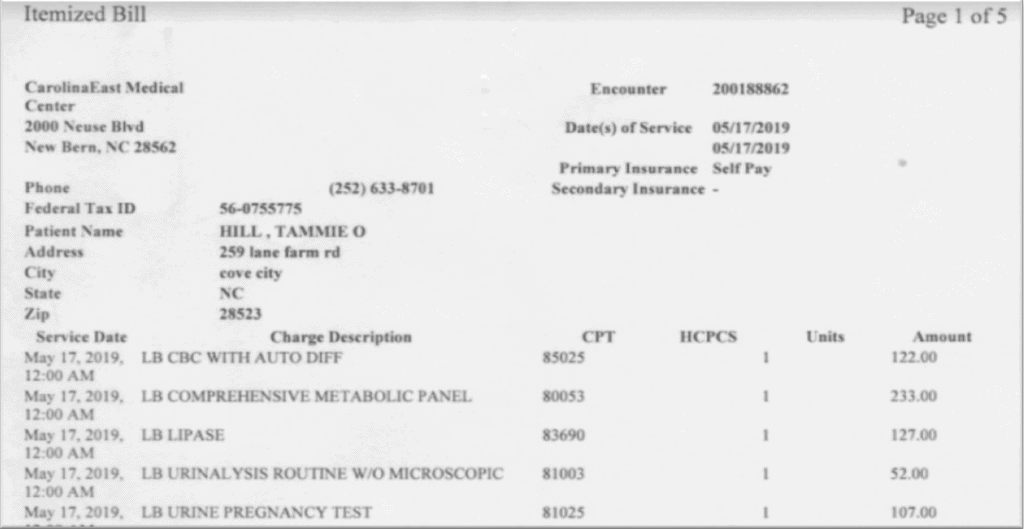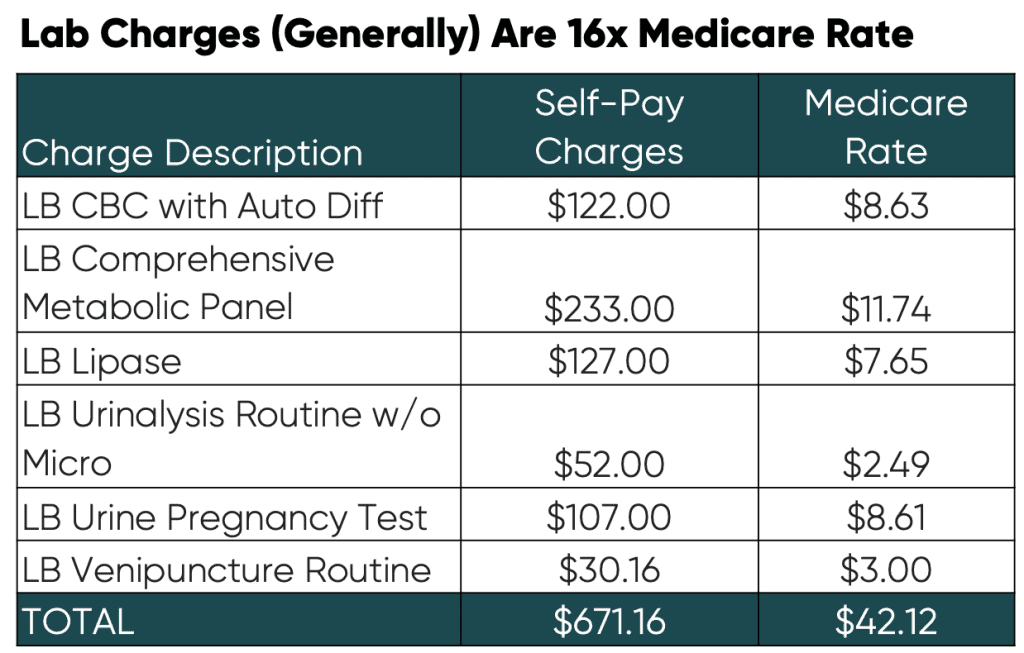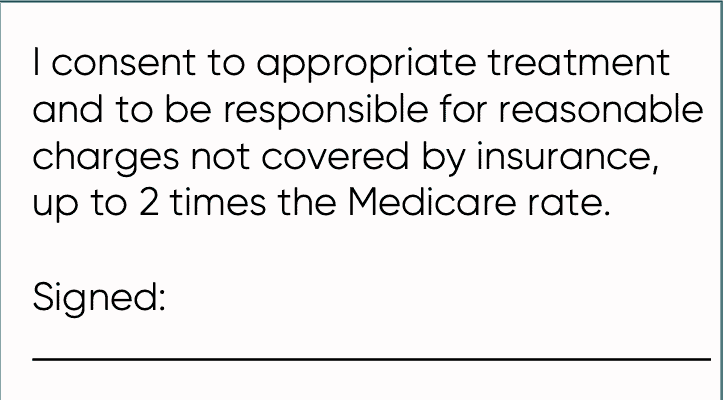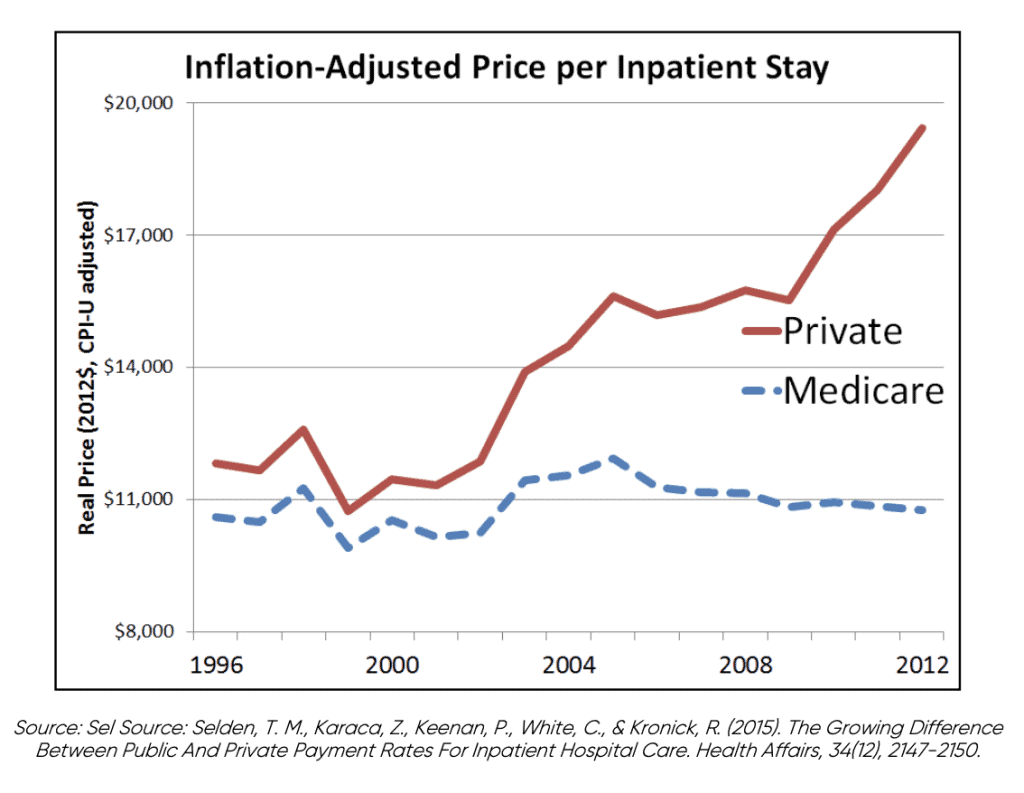“You think Halloween is scary? Try surprise medical bills.” This was the headline of the revolutionary one-hour webinar, “Is there a CURE for Employees’ Surprise Medical Bills?” presented on October 31, 2019, by Health Rosetta and Validation Institute.
Health policy and employee benefits experts gave real stories about how these bills alter the lives of employers and employees. As the panelists of experts spoke, it became clear that employee education can help with avoiding surprise medical bills and inflated charges that keep Americans close to filing bankruptcy. It also confirmed that the Direct Primary Care model that Direct Med Clinic uses is vital in reforming the delivery of US healthcare through price transparency.

A Surprise Medical Nightmare
The webinar opened with a real-life story of a surprise medical bill. The cost, although exorbitant, was a real medical bill from just six months ago (May 2019). Ph.D. Brian Kleppler talked about a claim that a hairdresser received after going into the emergency room at CarolinaEast Medical Center in New Bern, North Carolina because of sharp pains. The woman had her appendix removed and was mailed a hefty $39,000 bill to pay. When the patient inquired into the charges, she was told that the bill reflected a 40% discount off charges. The bill is currently undergoing professional review and is slated to go to the state for audit.

Kleppler explained that the claim was incomplete and had missing codes. It did not specify the formal procedure the patient received, and many items were missing CPT or HCPC codes, a set of medical codes healthcare professionals use to classify the type of procedure. Professional reviewers suspect that many of these services were unnecessary and that the patient was charged for products and services never rendered. The patient has now received a more complete bill as well as her patient record, but it was a hassle. The patient was also inappropriately charged for services that should not have been rendered, as a woman of non-child bearing age.

Kleppler cited there are more than 30,000 cases each day that particularly affect low-income and uninsured patients who are unprotected against these unjust surprise medical bills. This surprise medical bill represents many Americans’ struggle to survive a system of inflated healthcare costs while trying to save their lives and deal with the psychologically tormenting aftermath. “When many hospitals also receive additional state funding for care of low-income patients, they are in essence ‘double-dipping’ at the tax-payers expense.”
The Call To Change Hospital Billing Practices
Dr. Marty Makary defends patients by pointing out this overt abuse of the hospitals’ mission and not-for-profit status. In his book, “The Price We Pay,” he calls for change to hospital billing practices, which has already been implemented in several states.

Dr. Makary travels the country defending patients in hospitals and in courts to prevent wage garnishment from patients for unpaid inflated medical bills or surprise bills.
Recurring themes throughout Dr. Makary’s insights as a panelist involve empowering patients with information in advance to avoid the situation. He describes “consent-to-treatment,” and explains to employers why they should never let their employees “just sign the forms thrust in front of them.”

“We, in healthcare, the medical establishment, and those at the end of administration sending out bills sometimes forget what it’s like to struggle. People are living paycheck-to-paycheck all around us.” While he does agree that doctors and healthcare professionals deserve to be paid for their work, he also maintains that there are “egregious money games of price gouging and practices that are predatory billing practices.” Dr. Makary explains that 64% of Americans avoid or delay medical care for fear of medical bills. He notes that these games are not only costly and exhausting, but they threaten public trust. He warns the American public of the dangers of signing documents that are equivalent to “signing one’s financial life away.”

Dr. Makary gives a deeper understanding of what rights patients have and what will become an agreement. “You do not have to pay whatever prices are produced without being able to see those prices and are willing to pay under penalty of law. Hospitals are required by EMTALA law to take care of anybody that comes in with an urgent or emergent condition regardless of one’s ability to pay.” He continues to explain that not only is it the law, but an oath that medical professionals proudly undertake. Many of their mission statements and their charter statements say that they will take care of the community regardless of one’s race, creed, or ability to pay. He explains that many bills are negotiable before, during, and after care.
Dr. Makary wants to create public accountability on a local level for hospitals and insists that billing quality is medical quality. “We’ll be releasing soon financial toxicity as a medical complication and taking care of a patient is taking care of the whole person. It doesn’t make sense to take care of someone when they come to us at a time when they’re vulnerable, cure their disease, and then ruin their lives financially.”
When There Isn’t a Benchmark


Marylin Bartlett was named Fortunes World’s 50 Greatest Leaders for what she accomplished during her four years as administrator of the Health Care and Benefits Division of the state Department of Administration. Marylin literally saved the state of Montana’s health plan from declaring bankruptcy by fighting for price transparency from hospitals and doctors. After fighting, she then negotiated better deals. Bartlett’s model has encouraged other employers to emulate their example.
Marilyn recalls receiving many negative comments from insurance brokers claiming that she “never looked at quality, and never looked at value.” Marilyn, however, argues that “value is a combination of price and quality.” Marilyn shows how they took on 11 of Montana’s largest hospitals by examining hospital reimbursements, price, and utilization. “We knew that we had to deal with that, so we started studying the discount off of bill charge amount. A charge amount that you can never see and started seeing the flaws in that.”
Marilyn explains that while for inpatient there showed a decline and outpatient was stable, the price for individuals was steadily increasing because of the billing methodology, the discount game that she claims has been perpetuated by carriers and brokers.
Reference-Based Pricing

Although Marilyn mentions the “discount games” that have been perpetuated by carriers and brokers, there are, however, insurance brokers, such as broker-of-the-year David Contorno, who are knowledgeable and understand the role a broker can play in price transparency. Throughout the webinar, he provides tips that help to avoid paying inflated charges.
When asked about the work to reduce the bills for the patients and if there is any benchmark/professional association to validate their services, David Contorno responded that he can always tell what the settled upon price is as it relates to Medicare. “That gives you a benchmark. I can also look at the average billed and see how it compares. I just need facility names and procedure codes and I can tell you all of that.”
In Montana, they selected Medicare as a reference point because as a common reference the methodology overcomes variation in chargemasters and differences in billing practices. “Medicare is the largest healthcare payer in the world, the prices and the methods are empirically based.” This means that the prices are intended to be fair and the government uses quality measures in their value-based payment. Montana saw Medicare as the very best measure. Today, within the state of Montana, the legislative requirements are no balanced billing, which leads to contracting, and control over future reimbursement increases.
Solving The Problem of Surprise Billing
In conclusion, Direct Med Clinic learned about two components on how people are able to solve the problem of surprise billing by having Dr. Makary talk about battlefield consent, and then, benchmark billing or pricing with Marilyn Bartlett, David Contorno, and others who answered questions. By the way, the answer to the question, “Is there a cure for employees’ surprise medical bills” is yes!
About Health Rosetta and Validation Institute
Health Rosetta
Health Rosetta ecosystem’s mission is to help group benefits purchasers sustainably reduce health benefits costs and provide better care for their employees. Health Rosetta is considered a blueprint for purchasing benefits. They search for the highest-performing benefits purchasers and then bring quality services and low-cost providers to employers.
Validation Institute
Validation Institute is an association that is comprised of healthcare vendors, health benefits advisors, and purchaser benefit managers that work together to form a network dedicated to bringing better health value and tangible results that are more grounded than traditional healthcare and services.


Recent Comments